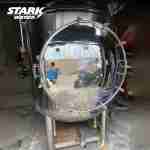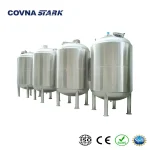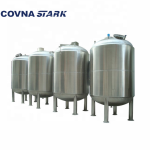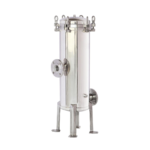Reverse osmosis (RO) and water treatment systems are essential for producing high-purity water in industrial, municipal, and commercial applications. One of the most overlooked yet critical components of these systems is the storage tank. Whether storing permeate water or buffering supply for downstream processes, the right water tank can ensure system stability, minimize contamination risk, and reduce operational costs.
This guide introduces the best types of water tanks suited for RO and water treatment systems, comparing stainless steel and FRP materials, and offering guidance on choosing the right tank for your specific water quality, pressure, and installation requirements.
Why Tank Material Matters in RO Systems
In reverse osmosis and water treatment systems, the water tank is more than just a passive container. It directly affects water quality, bacterial growth control, resistance to pressure fluctuation, and compatibility with chemical disinfectants. Because permeate water is often low in dissolved solids and highly oxygenated, it can be more corrosive to metal surfaces—especially when paired with disinfectants like chlorine or ozone.
Choosing the wrong tank material can lead to premature corrosion, leakage, biofilm development, and even contamination of purified water. Factors like tank wall smoothness, chemical compatibility, temperature tolerance, and structural durability all influence system efficiency and maintenance cycles.
Therefore, it's crucial to evaluate the application environment carefully before selecting a tank for RO storage. In this article, we compare three of the most widely used tank materials for RO systems: SUS316 stainless steel, duplex stainless steel, and FRP (fiberglass reinforced plastic). If you're also looking for complete RO systems or filtration equipment, visit our STARK water treatment system catalog for integrated solutions.
Comparison of Tank Materials for RO Systems
RO permeate water tends to have low conductivity and may contain residual disinfectants, making material compatibility a key concern. Here's how three common tank types perform in RO and water treatment applications:
| Material | Corrosion Resistance | Hygiene & Cleanability | Strength & Pressure Handling | Typical RO Application | STARK Product |
|---|---|---|---|---|---|
| SUS316 Stainless Steel | Excellent for low-TDS water | High – CIP-ready polished surface | Moderate | Pure water storage, pharma-grade RO | SUS316 Sterile Water Tank |
| Duplex Stainless Steel (e.g., 2205) | Outstanding against chlorides and chemicals | High – Polishable for sanitary use | Very High – Ideal for high-pressure systems | Seawater RO, brine tanks, chemical dosing | Duplex Steel Tank |
| FRP Composite | Moderate – Requires internal lining | Low – Porous surface, hard to sanitize | Low to Moderate | Basic pre-treatment or buffer tank | FRP Composite Tank |
While FRP tanks are cost-effective for low-risk applications, stainless steel—particularly duplex—offers superior performance, durability, and cleanliness for critical RO water handling.
Recommended Configurations Based on RO System Type
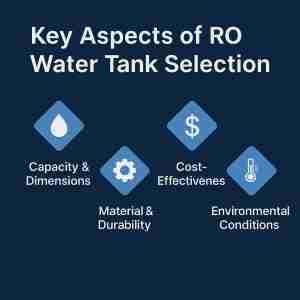
The ideal water tank depends heavily on the specific reverse osmosis system you’re operating. Below is a quick-reference guide to help you choose the right tank material for your application.
| RO System Type | Water Characteristics | Recommended Tank Material | STARK Product |
|---|---|---|---|
| Commercial RO (offices, labs, electronics) | Low-TDS, clean water | SUS316 Stainless Steel | SUS316 Sterile Water Tank |
| Industrial RO (textile, manufacturing, bottling) | Moderately aggressive water with chemical residue | Duplex Stainless Steel | Duplex Steel Tank |
| Seawater RO / Brackish Water RO | High salinity, chloride content | Duplex Stainless Steel | Duplex Steel Tank |
| Municipal / Agricultural RO | Variable quality, low pressure storage | FRP Composite Tank | FRP Composite Tank |
Still unsure which tank suits your system? Check our full water treatment equipment catalog or speak to our engineering team for tailored recommendations.
Conclusion: Choose the Right Tank to Protect Your RO Investment
In RO and water treatment systems, a reliable water tank is not just a storage component—it’s a safeguard for water purity, system efficiency, and long-term operational stability. Whether you are managing municipal RO systems, high-end pharmaceutical water lines, or seawater desalination facilities, selecting the right tank material can reduce maintenance, prevent contamination, and extend the life of your infrastructure.
At STARK, we offer a full range of RO-compatible tanks built from high-grade materials like SUS316, duplex stainless steel, and FRP. Every tank can be customized to your pressure, capacity, and connection needs.
For full-system design and RO filtration equipment, visit our main product line at STARK Water Treatment Solutions .
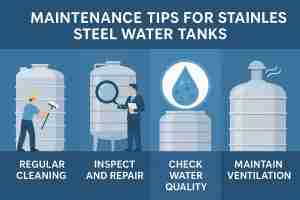
Need help selecting the best tank for your application? Contact the STARK engineering team today for expert guidance.

